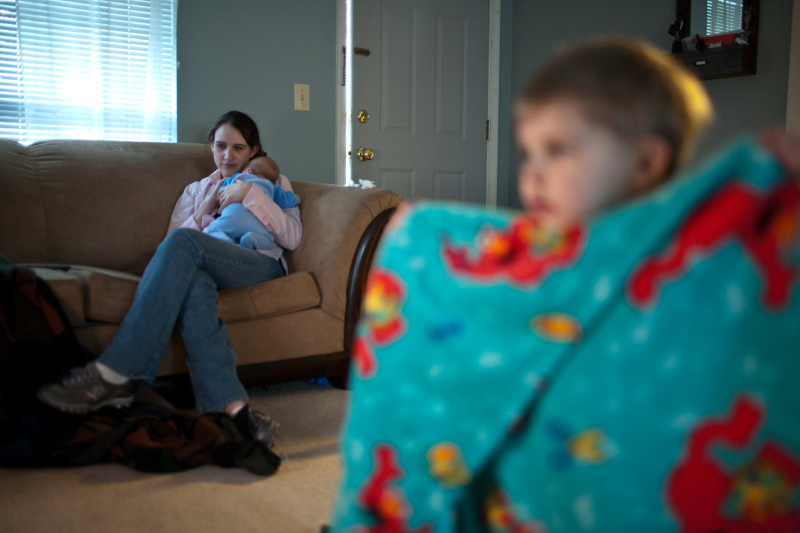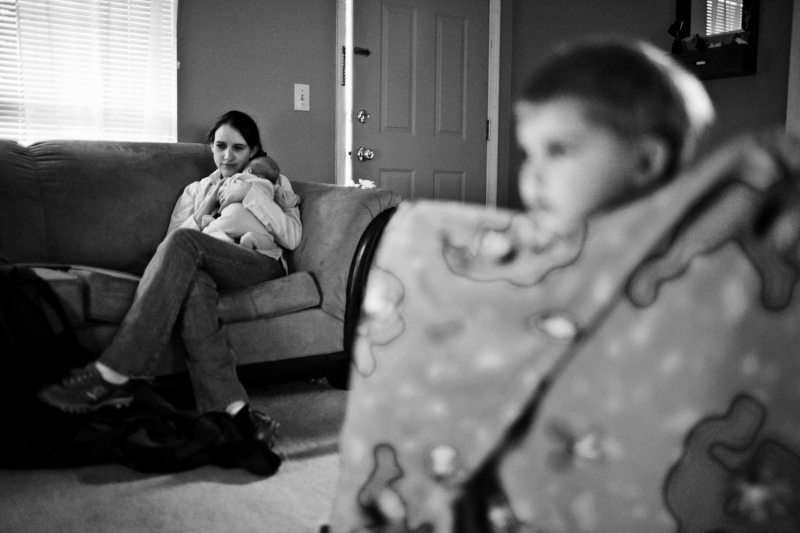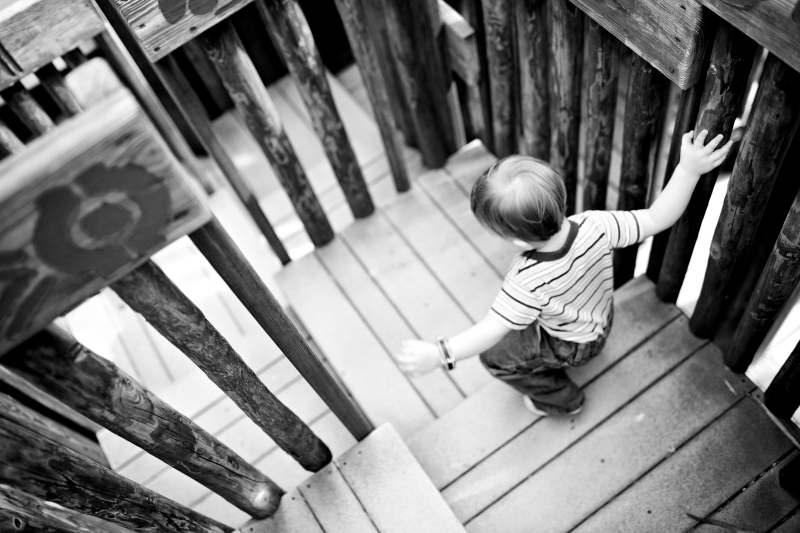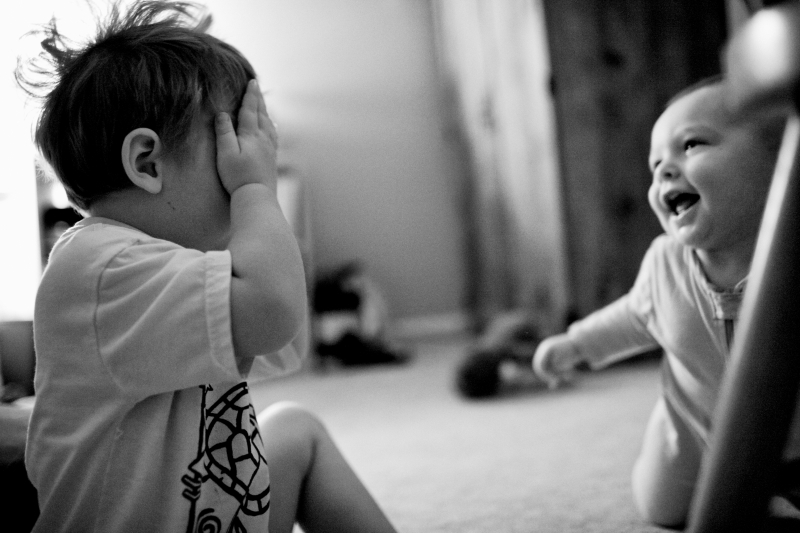

a. Notice that the color shot seems to have a lot more information for the viewer to digest. It's color itself.
b. You notice the pink on my wife's shoes, her pink shirt contrasted against the blue onesie, the bright red and blue of the elmo blanket in the foreground, etc.
c. Now, view the b&w again. Much of those potential distractions have been removed.
d. The blanket in the foreground no longer draws the eye away from the real moment of a mother comforting her newborn baby.
e. The color of clothing and the shoes are irrelevant and no longer draw the eye, either.
f. Now we are left with something more simple, stripped down, and conceptual. And without color, there is little that could truly date this image (well, maybe the couch).
B&w images have a more classic feel, don't they? There's not only a sense of nostalgia that we have for them but the simplicity of these images draws us in and invites us to explore them in a way that I would argue many color images cannot. Chet Raymo in The Soul of the Night, says "In New England in October anyone can take a pretty picture, and most do....Point the camera in any direction, snap the shutter, and the image is certain to please." He suggests that the photographer must pay greater attention to his or her selection of subject matter, lighting, composition, tonality, and even color, in order to make a good b&w. The simple fact of beautiful color in an image can no longer make a photo work. The photographer now has to dig deeper and use content to entice the viewer.
5. B&w images are conceptual. Almost instantly, a shot of my son running down stairs on a playground becomes a slice of childhood. As children, we all played on playgrounds, explored jungle gyms, and remember them fondly (for the most part). We can more easily connect to a b&w version of an image because of its conceptual nature, it's timelessness. We aren't drawn to the color of the clothing or its surroundings. We can tell it's a wooden gym and that is all the information we need on that.

I will add that the compositions of these images also lends themselves to the same timeless theme. B&w conversion isn't magic. There's a great deal that goes into a great b&w image, more than just the absence of color. My sons playing hide and seek is an example. They aren't paying attention to me. They're engrossed in their game and the timing is right. The activity is something that most of us did as children and we can relate, it's not only action oriented but conceptual, lending itself to a more timeless feel. The b&w conversion, then, allows us to focus on them without extraneous details such as color.

I promise you I don't hate color. I do hope that this mini-series on black and white has helped you to understand at least part of why it's so effective and why Chuck and I use it frequently in our work, both professionally and personally.
daniel

Hey Daniel,
ReplyDeleteThanks for putting this blog together. Found it through FM. A good read.
Take care,
Paul.
I agree so much!!! I have a similar type of photo of my son (a bit younger), also on a playground, and I strongly felt that the B&W conversion told more of a story than the color. I couldn't put it into words as to "why," but you sure have, and succinctly so! Thank you! :)
ReplyDeletehttp://www.pbase.com/bostonrott/image/117073873.jpg
Thank you for these 2 parts on why B&W. You have answered many questions that I was lost with, and you have motivated me to try this with my own family photos. I might even cheat, as a way to explore B&W, and set my camera to display the live view image in B&W, just to learn to see the world better through these simplifying visual principles.
ReplyDeleteDrusus